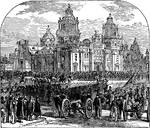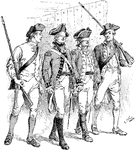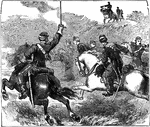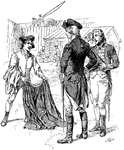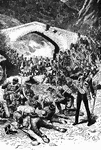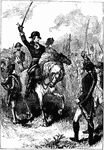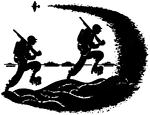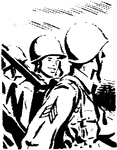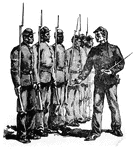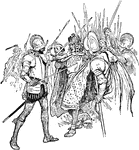
Discovery of a Confederate Battery at Messech's Point
The activity of the Confederates on the Potomac and the confluent rivers was almost incredible. In one…
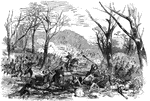
Battle of Mill Spring
"Battle of Mill Spring, on the Cumberland River, near Jamestown, between a confederate force, 8,000…

Battle of Mill Spring
"Battle of Mill Spring, on the Cumberland River, near Jamestown, between a confederate force, 8,000…
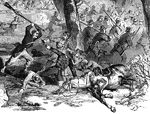
Battle of Mill Spring
"Battle of Mill Spring, on the Cumberland River, near Jamestown, between a confederate force, 8,000…

Battle of Mill Spring
"Battle of Mill Spring, on the Cumberland River, near Jamestown, between a confederate force, 8,000…
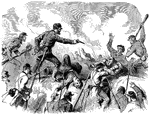
Lieutenant Colonel Morrison
"Heroic conduct of Lieutenant Colonel Morrison, Seventy-Ninth New York Highlanders, on the parapet of…

Thirteen-inch Shell Mortar Practice
"Mortar practice- 13-inch shell mortar, as used by the Federal government- weight of mortar 17,000 pounds."…

Mortar Practice - Rear View
"Mortar practice- rear view of 13-inch mortar, with its usual complement of seven gunners. The mortar…

Munson's Hill
"Skirmishing between the pickets of the two armies near Munson's Hill- the hill in the distance. Munson's…

New Fernandina
"Federal troops marching through Second Street, New Fernandina, Fla. Our sketch of New Fernandina in…

Florence Nightingale
"Miss Florence Nightingale did remarkable work during the Crimean War for the relief of sick and wounded…
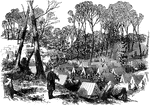
Camp of Ninth Massachusetts
"Camp of the Ninth Massachusetts Regiment in the woods, one mile from the Confederate fortifications,…

Oven
"'Fresh Bread!'- Impromptu oven built by the Nineteenth Regiment, New York Volunteers, in General Banks's…

Battle of Pea Ridge
"Battle of Pea Ridge, Ark., fought March 6th, 7th and 8th, 1862, between the Federal forces, 13,000…
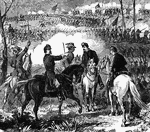
Battle of Pea Ridge
"Battle of Pea Ridge, Ark., fought March 6th, 7th and 8th, 1862, between the Federal forces, 13,000…

Battle of Pea Ridge
"Battle of Pea Ridge, Ark., fought March 6th, 7th and 8th, 1862, between the Federal forces, 13,000…
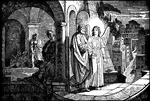
Peter Emerges from Prison after Being Saved by an Angel
"And he went out, and followed; and he knew not that it was true which was done by the angel, but thought…
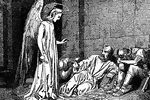
Peter Liberated from Prison Chains by an Angel
"And when Herod was about to bring him forth, the same night Peter was sleeping between two soldiers,…

Pontoon bridge
"General Fremont's Division crossing the Pontoon Bridge over the Shenandoah River in pursuit of the…

Battle at Potomac
"Engagement between the Federal troops and the Confederates on the Virginia side of the Potomac, opposite…
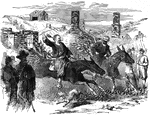
Passage of the Potomac
"A street in Harper's Ferry, VA., during the passage of the Potomac by the Federal troops from Maryland,…
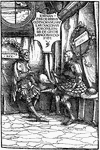
Hans Burgmais Print
This is a Hans Burgmair print that was created in 1516 in Augsburg, Germany. It seems to depict two…

Prison
"The humors of a prison- scene in a station-house cell, Washington, D. C., after the appointment of…
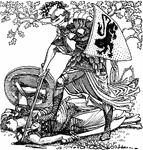
Fairy Queen
This is an illustration of the Fairy Queen by English artist Walter Crane in 1896. It is an English…
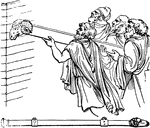
Battering Ram
"The battering ram was a large beam, made of the trunk of a tree, and having a mass of bronze or iron…

Reconnoissance
"Reconnoissance by Colonel Max Weber's Turner rifles in the vicinity of Newmarket Bridge, on the road…

Sixth Massachusetts Regiment in Baltimore
An illustration of the sixth Massachusetts regiment in Baltimore.
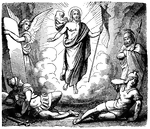
The Resurrection of Jesus after the Angel Removed the Stone from the Tomb Entrance
"And behold, there was a great earthquake; for an angel of the Lord descended from heaven, and came…

Rolla Camp
"Encampment of the Federal army near Rolla, Mo. The city of Rolla has been famous since the death of…

Saratoga and Stillwater - Encampments of Burgoyne's Army
Encampments of Burgoyne's army, Saratoga and Stillwater.

Saul's Conversion on the Road to Damascus
"And as he journeyed, it came to pass that he drew nigh unto Damascus: and suddenly there shone round…

Battle of Secessionville
"Battle of Secessionville, James Island, S. C.- bayonet charge of Federal troops, commanded by General…
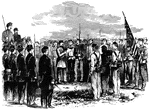
Seventy-ninth Regiment
"Taking away the colors of the Seventy-ninth New York Regiment for insubordination and mutiny, Washington,…

Crossing of Shenandoah River
"Colonel Pilson's Battery shelling the rear guard of the Confederate General Jackson's Army, at the…
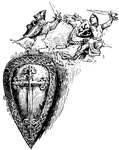
Medieval Shields from the 13th and 14th Centuries
Illustration including one large shield from the first half of the 13th century, bearing a decorative…

Soldiers & Nurses
A decorative illustration with soldiers on the left side and nurses tending to a soldier on the right.

Greek Soldiers
"A group of Greek soldiers, drawn from sculptured figures in the temple pediment."—Gordy, 1912
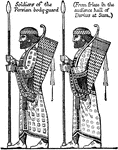
Persian Soldiers
Soldiers of the Persian bodyguard. From frieze in the audience hall of Darius at Susa.
